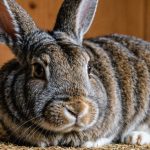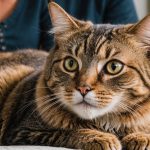Overview of Feline Leukemia Virus (FeLV)
Feline Leukemia Virus (FeLV) is a significant cause of disease in cats, impacting their immune system and overall health. FeLV is a retrovirus that is transmitted through saliva, blood, and to a lesser extent, urine or faeces. It weakens a cat’s ability to fight infections and can lead to conditions such as anaemia or lymphoma.
Impact of FeLV on Cats
Cats infected with FeLV may experience a range of symptoms, including weight loss, poor coat condition, fever, and diarrhoea. Over time, the virus can suppress their immune systems, making them susceptible to other infections like bacterial and parasitic illnesses. While some cats may remain asymptomatic, others may develop severe health issues.
Also to see : Transforming feline lives: effective techniques to reduce anxiety and enhance sensory comfort for your cat
FeLV Safety and Health Considerations
Creating a safe environment for FeLV-positive cats is crucial. An outdoor enclosure that prevents contact with uninfected cats helps reduce transmission risk. This precaution not only protects FeLV-positive cats but also the broader feline population.
Regular veterinary check-ups are essential for managing the health of FeLV-positive cats. Vaccinations, dental care, and prompt treatment of any infections can enhance their quality of life. Providing a balanced diet and minimising stress are also key factors in supporting the health of these felines.
In the same genre : Key Factors to Consider Before Welcoming a Special Needs Cat Into Your Home
Designing Secure Outdoor Enclosures
Creating a secure outdoor cat enclosure is vital for the well-being of FeLV-positive cats. These enclosures allow your feline friends to enjoy the outdoors in a safe, controlled environment, essential for protecting them from further health risks.
When designing such enclosures, focus on key features that ensure both safety and comfort. FeLV-safe habitats must use robust materials like galvanised steel and weather-resistant wood, providing durability against harsh weather conditions. The enclosures should be entirely enclosed with escape-proof lids or mesh tops to prevent any adventurous attempts to climb out.
These habitats should incorporate cat enclosure design principles that cater to your pet’s natural instincts and comfort. Ensure elevated platforms, non-toxic plants, and semi-enclosed spaces for hiding. Also, provide shading and shelter to protect against harmful UV rays and inclement weather.
To prevent escapes and ensure safety, carefully examine the enclosure for any potential gaps or weak points. Recommended additions include securing all joints and corners with sturdy latches and incorporating tunneled entryways to deter quick exits.
Ultimately, these enclosures not only protect FeLV-positive cats but also enhance their quality of life by allowing them to explore natural environments safely.
Enhancing Engagement and Stimulation
Creating a stimulating environment is crucial for FeLV-positive cats. The right enrichment activities can significantly impact their well-being and happiness.
For FeLV-positive cats, enrichment should centre on safety and stimulation. Puzzle feeders can keep them mentally engaged, challenging their instinctual hunting skills without compromising their health. Similarly, interactive toys that simulate prey movements engage natural behaviours like stalking and pouncing while remaining safe for the cat. Regularly rotating toys can keep these activities fresh and exciting.
In outdoor play settings, incorporating safe plants is essential. Cats often enjoy nibbling on greenery, so consider planting cat-safe grasses such as catnip, cat thyme, and valerian. These not only stimulate but also provide nutritional benefits. Incorporating natural elements like logs and vertical climbing spaces can further encourage exploration and climbing, emulating a more natural environment.
When designing engaging layouts, bear in mind your cat’s natural behaviours. Offering varied textures and levels, using shelves or ramps, enhances their experience. Sunlit spots within controlled outdoor areas can provide warm relaxing spaces. Always ensure that outdoor areas are well-secured to prevent any chance of escape or encounters with other animals.
By thoughtfully crafting these environments, you cater to both the playful and comforting needs of FeLV cats.
Health and Maintenance Considerations
Maintaining outdoor spaces securely and effectively is key for the health and well-being of FeLV-positive cats. Routine maintenance involves regularly checking enclosures for signs of wear or damage, ensuring fencing and netting are intact to prevent escapes and protect from external threats. Consistent upkeep of cleanliness is vital; removing debris and sanitizing surfaces can minimize the risk of other infections to vulnerable cats.
Health precautions must include regular health checks for FeLV cats. Observations should focus on any behavioral changes, such as increased lethargy or sudden weight loss, as these can be signs of health deterioration. Early detection through consistent monitoring aids in managing conditions timely and efficiently.
Consultation with a veterinarian is indispensable for enduring care of FeLV-positive cats in outdoor settings. Experts can offer tailored advice on necessary health precautions and adapt maintenance routines based on the cat’s evolving needs. This might entail specific dietary adjustments or introduction of supplements to boost their immune health, ensuring cats thrive in their environment.
In addressing both outdoor space maintenance and health concerns, owners cultivate a safe and supportive habitat for their FeLV cats, optimizing their quality of life while minimizing health risks.
Addressing Behavioral Issues
FeLV-positive cats can experience unique behavioural challenges, particularly when they live in outdoor environments. Common issues include anxiety, aggression, and changes in social interaction. To address these challenges, it is essential to focus on FeLV behavioural management through enriching environments that cater to their specific needs.
One effective strategy is to create a calm and predictable environment. This can be achieved by incorporating hiding spots and elevated pathways. Cats naturally seek higher ground to observe their surroundings, offering them a sense of security. Moreover, providing interactive toys and scratch posts helps in preventing boredom and promoting healthy behaviours.
Each cat may react differently to environmental changes, so it is crucial to observe individual behaviours closely. Owners should take note of each cat’s preferences, habits, and routines. For instance, some FeLV-positive cats may thrive with increased social interaction, while others may prefer solitude.
Adapting to these unique behaviors can foster a more harmonious living space. Introducing changes gradually can minimize stress and allow the cat to adjust comfortably. By focusing on the specific needs of FeLV-positive cats, owners can create environments that encourage positive behaviour and improve the overall quality of life for these animals.











